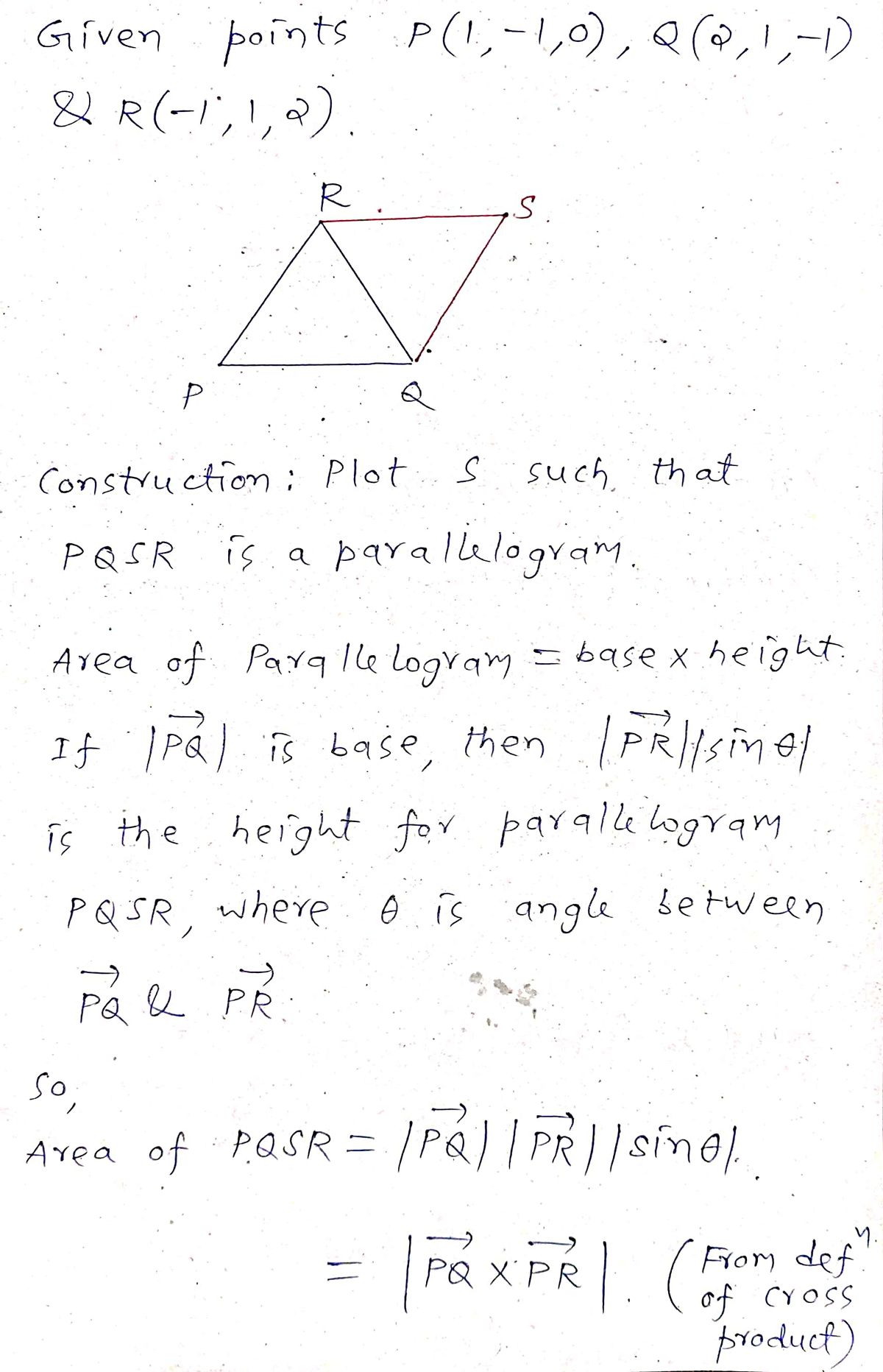Read Example 3 (p. 739). Explain how the geometric meaning of the cross product helps solve this example.
Read Example 3 (p. 739). Explain how the geometric meaning of the cross product helps solve this example.
Advanced Engineering Mathematics
10th Edition
ISBN:9780470458365
Author:Erwin Kreyszig
Publisher:Erwin Kreyszig
Chapter2: Second-order Linear Odes
Section: Chapter Questions
Problem 1RQ
Related questions
Question
Exercise 3. Read Example 3 (p. 739). Explain how the geometric meaning of the cross product
helps solve this example.
We won’t be covering the last two subsections, but they might be worth taking a look at. The subsection
“Torque” (p. 739 – 740) covers a physical application of the cross product. While the last subsection
“Triple or Box Product” (p. 740 – 741) goes over a geometric way that the dot product and cross product
interact with each other.

Transcribed Image Text:Torque
Component of F
perpendicular to r.
Its length is | F sin 8.
FIGURE 12.33 The torque vector
describes the tendency of the force F to
drive the bolt forward.
Torque
When we turn a bolt by applying a force F to a wrench (Figure 12.33), we produce a
torque that causes the bolt to rotate. The torque vector points in the direction of the axis
of the bolt according to the right-hand rule (so the rotation is counterclockwise when
viewed from the tip of the vector). The magnitude of the torque depends on how far out on
the wrench the force is applied and on how much of the force is perpendicular to the
wrench at the point of application. The number we use to measure the torque's magnitude
is the product of the length of the lever arm r and the scalar component of F perpendicular
to r. In the notation of Figure 12.33,
Magnitude of torque vector = |r||F| sin,
or r X F. If we let n be a unit vector along the axis of the bolt in the direction of the
torque, then a complete description of the torque vector is r X F, or
Torque vector = r X F = (|r||F|sin) n.
Recall that we defined u X v to be 0 when u and v are parallel. This is consistent with the
torque interpretation as well. If the force F in Figure 12.33 is parallel to the wrench, mean-
ing that we are trying to turn the bolt by pushing or pulling along the line of the wrench's
handle, the torque produced is zero.

Transcribed Image Text:Chapter 12 Vectors and Geometry of Space
Solution The vector PÒ X PR is perpendicular to the plane because it is perpendicular
to both vectors. In terms of components,
PÒ = (2-1)i + (1 + 1)j + (−1 − 0)k = i + 2j - k
PR = (1 - 1)i + (1 + 1)j + (2 − 0)k = −2i + 2j + 2k
PO X PR =
1 2 -1
-2 2
2
= 61 + 6k.
=
12.4 The Cross Product 739
Solution The area of the parallelogram determined by P, Q, and R is
PÒ X PR| = |6i + 6k
-1
1
---12 2+2
EXAMPLE 3 Find the area of the triangle with vertices P(1,-1, 0), Q(2, 1,-1), and
R(-1, 1, 2) (Figure 12.32).
V(6)¹ + (6)² = √2-36-6√/2.
The triangle's area is half of this, or 3√₂.
n =
PÒ X PR
PÒ X PR
2
6i + 6k
6V/2
2
EXAMPLE 4 Find a unit vector perpendicular to the plane of P(1,-1,0), Q(2, 1,-1),
and R(-1, 1, 2).
k
Solution Since PQX PR is perpendicular to the plane, its direction n is a unit vector
perpendicular to the plane. Taking values from Examples 2 and 3, we have
Values from Example 2
= √2/12/²+1/2 k
For ease in calculating the cross product using determinants, we usually write vectors
in the form v = v₁ + ₂ + uşk rather than as ordered triples v = (V₁, V₂, U₂).
Expert Solution
Step 1: Explanation

Step by step
Solved in 3 steps with 2 images

Recommended textbooks for you

Advanced Engineering Mathematics
Advanced Math
ISBN:
9780470458365
Author:
Erwin Kreyszig
Publisher:
Wiley, John & Sons, Incorporated

Numerical Methods for Engineers
Advanced Math
ISBN:
9780073397924
Author:
Steven C. Chapra Dr., Raymond P. Canale
Publisher:
McGraw-Hill Education

Introductory Mathematics for Engineering Applicat…
Advanced Math
ISBN:
9781118141809
Author:
Nathan Klingbeil
Publisher:
WILEY

Advanced Engineering Mathematics
Advanced Math
ISBN:
9780470458365
Author:
Erwin Kreyszig
Publisher:
Wiley, John & Sons, Incorporated

Numerical Methods for Engineers
Advanced Math
ISBN:
9780073397924
Author:
Steven C. Chapra Dr., Raymond P. Canale
Publisher:
McGraw-Hill Education

Introductory Mathematics for Engineering Applicat…
Advanced Math
ISBN:
9781118141809
Author:
Nathan Klingbeil
Publisher:
WILEY

Mathematics For Machine Technology
Advanced Math
ISBN:
9781337798310
Author:
Peterson, John.
Publisher:
Cengage Learning,

